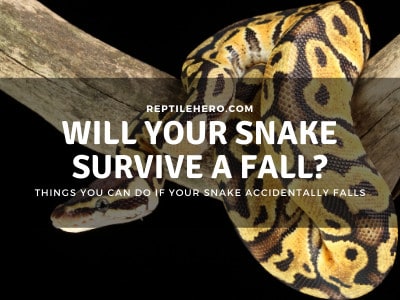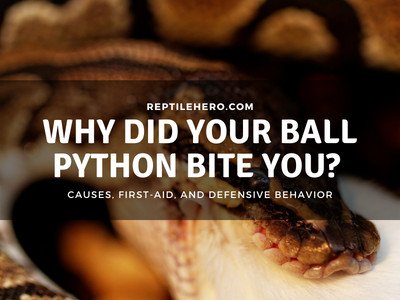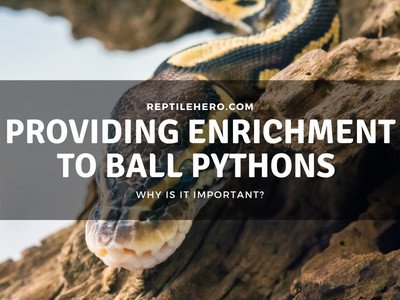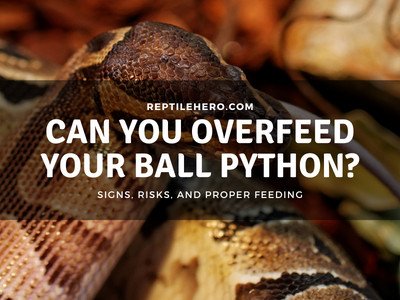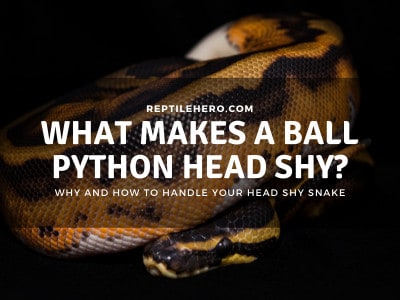Can a Ball Python Kill a Dog? Be Careful!
Are you wondering whether or not a ball python can injure a dog? If you’re a ball python owner who also has dogs at home, you’re likely worried about this all the time! Since ball pythons and dogs aren’t exactly the best of friends, it’s essential to know if they can get into dangerous situations together.
Ball pythons cannot kill dogs that are medium to large in size. However, dogs that are similar in size and weight to the python are at risk of getting bit and constricted which can even be fatal. However, there is currently no evidence that a dog has been killed by a ball python.
You are probably a dog keeper yourself and are having second thoughts about owning a ball python. But don’t worry, read until the end to find out everything there is to know about having ball pythons and dogs in the same house!
Can Ball Pythons Harm Dogs?
In most cases, ball pythons are not dangerous to dogs and can only cause minor bite injuries. However, the severity of the wound depends on whether or not the python is bigger than the dog.
Ball pythons are at more risk when interacting with medium and large dogs.

A keeper I know once shared that his 900-gram ball python had bitten his 2,500-gram chihuahua. He said that it was a defensive bite and not a feeding response. More importantly, it was only a minor injury that they were able to treat easily.
>>Learn more in our article why ball pythons bite.
He also stated that the dog did not seem to be in great pain from the bite and was only shocked when the python struck.
Even though they are not that harmful to dogs, there is a possibility that a 5,000-gram ball python can deeply injure or even kill a dog that weighs 3,000 grams and under.
However, there have not been any documented incidents to prove that a big ball python can really kill a dog.
When Do Ball Pythons Attack Dogs?
Ball pythons can attack dogs to defend themselves if they feel threatened. This often happens if the ball python is under heightened stress caused by either the dog, or owner or during shedding.
Most cases of a dog getting bitten by a ball python happens when the owner in lets them interact with each other.
Other than being threatened by the dog or owner, a ball python can strike at the dog when it is still in shed. They feel more vulnerable during this time due to poor vision and overall discomfort.
Of course, there are keepers that let their ball pythons come in close with their dogs. This is possible depending on the temperament of both.
However, I don’t recommend letting ball pythons and dogs interact—or even “play”—with one another as the risks greatly outweigh the benefits.
5 First Aid Steps for a Dog Bitten by a Ball Python
If a dog is bitten by a ball python, it is recommended to: 1) secure the dog, 2) clip the hair around the wound, 3) clean the wound, 4) bandage the wound, and 5) provide an e-collar. Nevertheless, a visit to the veterinarian is recommended.
1. Securing the Dog
Before the other steps, it is important to secure the dog to a fixed position to avoid further accidents. Smaller dogs should be placed on top of a table while bigger ones can be kept on the floor.
It is recommended to ask one more person to help you either hold the dog in place or cut itshair—more on that later.
If you have no other choice but to do it all on your own, you can use a body harness or leash to safely keep the dog settled down.
2. Clipping the Hair Around the Wound
Skip this step if the ball python bite is in a hairless area.
The hair around the wounded area should be clipped using an electric razor. Scissors can be used but it is more dangerous especially if the dog is struggling a lot.
Be careful not to use the electric razor too deeply into the wound to avoid causing even more pain to the dog. Always guard the dog’s ears and head when trimming hair.
3. Disinfecting the Wound
To properly disinfect the bite wound on the dog, it is recommended to wash it with a warm saline solution and clean off any debris.
Then apply an antibacterial ointment to the injury. Some pet-safe options are povidone-iodine and chlorhexidine.
For the warm saline solution, experts recommended mixing 1 tablespoon of salt for every 2 cups of water [1].
The disinfectant can be applied using cotton swabs. Apply it fast but thoroughly since the dog might feel pain during the process if it gets prolonged.
4. Covering With a Bandage
After cleaning and applying ointment to the ball python bite, get a bandage to protect the dog’s wound from licks, scratches, and bacteria.
The bandage should be replaced 2–3 times a day for a whole week or until the wound dries out.
Use non-stick bandages to cover up a dog’s wound. Bandages with adhesive can tear off hair and can be hard to remove.
After you have covered the wound with a bandage, we highly recommend taking your injured dog to the veterinarian to prevent bacterial infection of the injury.
5. Providing an E-Collar
For a fresh wound, an e-collar might help to prevent the dog from licking or chewing its wound. This is just an optional step but doing so can provide additional protection to the wound.

5 Signs That a Dog Has Been Bitten By a Ball Python
A dog that has been bitten by a ball python will show the following signs:
- A bite mark
- Excessive scratching or licking
- Lowered ears
- Limping walk
- Shivering
A ball python’s bite mark is hard to distinguish in hairy and dark dogs. But most of the time, it will draw blood due to the hook-like fangs of the python. So watch out for blood marks on your furry pet’s hair or body!
One of the major indications a dog is injured is when it licks or scratches a certain body part excessively. This is their natural instinct to disinfect the wound by utilizing their saliva [2].
Most dogs also show that they need help when they lower their ears—often while looking stressed out.
Lastly, if you also notice your dog limping or shivering, it may be a sign of injury inflicted by your ball python. A python bite can cause moderate-high amounts of pain which will vary depending on the size of the ball python, with a bigger snake having a nastier bite!
How Can You Keep Ball Pythons and Dogs Safe From Each Other?
The best way to keep both dogs and ball pythons safe from each other is to designate separate rooms for each animal. With separate living areas, the chances of both harming each other are greatly reduced and even eliminated.
If you are going to designate a separate room for your ball pythons, make sure to take note of possible escape routes they can use to get out of the room.
With separate rooms, you can worry less—especially if you are going to let either your ball python or dog out to roam their respective rooms.
Even though there are keepers who let their dogs and ball pythons interact with each other, I still discourage it due to the possible risks mentioned in the previous sections.
If you cannot provide a separate room for your ball python or dog, I recommend making sure that your ball python’s enclosure is sturdy and secure. Either a sliding or swinging-type door, the enclosure must always have a lock!
Make sure that your ball python’s tank is out of your dog’s reach as well.
>>Want to learn more about keeping ball pythons with house pets? Check out our article can ball pythons eat cats?
Further Questions
Can a ball python eat a small dog?
There is a possibility of a full-grown ball python eating small dogs specifically, teacup breeds. Such breeds usually weigh around 2,000 grams or less which can easily be preyed upon by a ball python weighing 4,000 grams or more. However, there are no available records of a ball python eating a small dog.
Are ball pythons venomous?
Ball pythons are not venomous. They use their bodies to kill their prey by constriction. Even though they are not venomous, a ball python bite can contain harmful bacteria that may cause the wound to be infected. That is why it is highly recommended to bring a human or pet that has been bitten by a ball python to prevent infections.
Summary of Can a Ball Python Kill a Dog?
Ball pythons can harm a dog but the possibility of killing one is very unlikely. However, puppies or dogs weighing half of a ball python are at risk of getting serious bite injuries. A ball python will attack a dog by striking when it feels threatened or stressed.
If a dog has been bitten by a ball python, it is important to treat the injury by following these steps: securing the dog, clipping the hair around the wound, disinfecting the bite wound, bandaging it, and providing an e-collar for the dog. It is also recommended to take the injured animal to the vet right after the first aid bandage is finished.
A dog that has been bitten by a ball python will show signs like a bite mark, excessive licking or scratching, lowering of ears, limping, and shivering. To prevent such instances from happening, keep ball pythons and dogs in separate rooms and ensure the security of the python’s enclosure.
Sources
[1] https://vcahospitals.com/know-your-pet/care-of-open-wounds-in-dogs
[2] https://www.thelancet.com/journals/lancet/article/PIIS0140-6736(05)63002-4/fulltext

